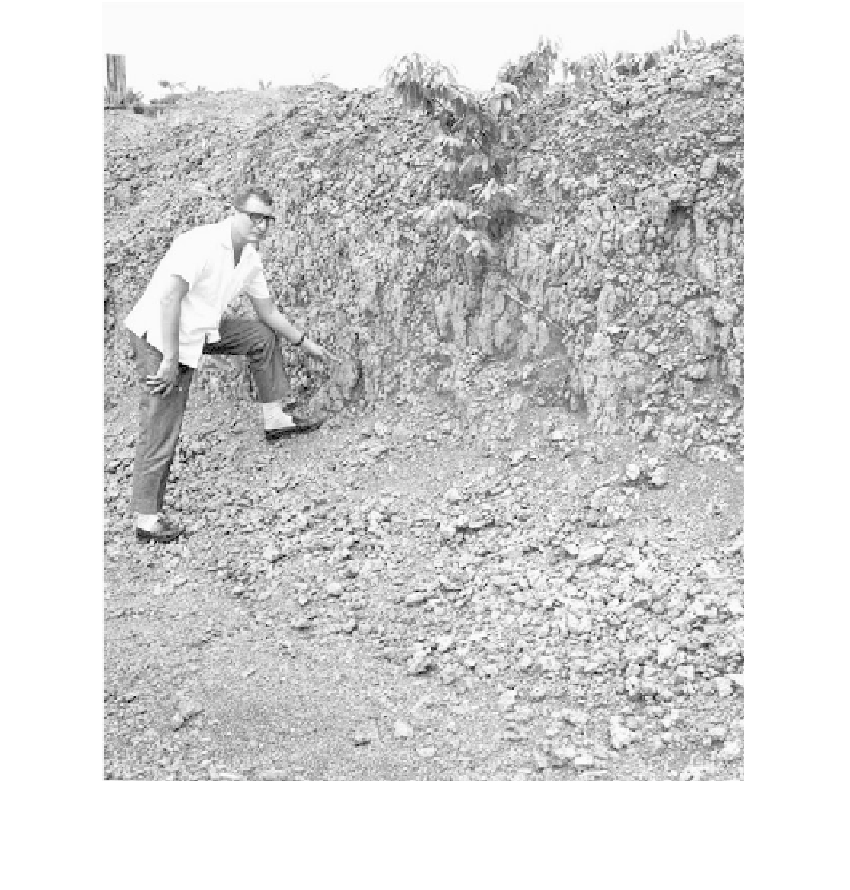Environmental Engineering Reference
In-Depth Information
FIGURE 7.105
Laterite deposit (Porto Velho, Rendonia, Brazil).
7.2.2).
If favorable climatic and groundwater conditions remain, the deposit continues to
grow in thickness and induration. An important requirement appears to be that the soil
remain dry for a substantial period, since induration does not occur in permanently satu-
rated ground or in forested areas. The formation is characteristic of gentle slopes on higher
ground above the water table. Laterization without induration can occur in rain-forest soils
where the vegetation protects the deposit; when the forest is cleared, however, induration
can occur dramatically within a few years, severely curtailing agricultural efforts.
Significance
In the advanced state of induration, laterites are extremely stable and durable, resist chem-
ical change, and will not soften when wet. Often located in areas lacking quartz sands and
gravels, they are an important source of aggregate for road construction and have even
been used for building facing stone.
Bauxite is the alumina-rich variety of laterite, with a smaller area-wise distribution than
the iron forms, and is of much less engineering significance.


